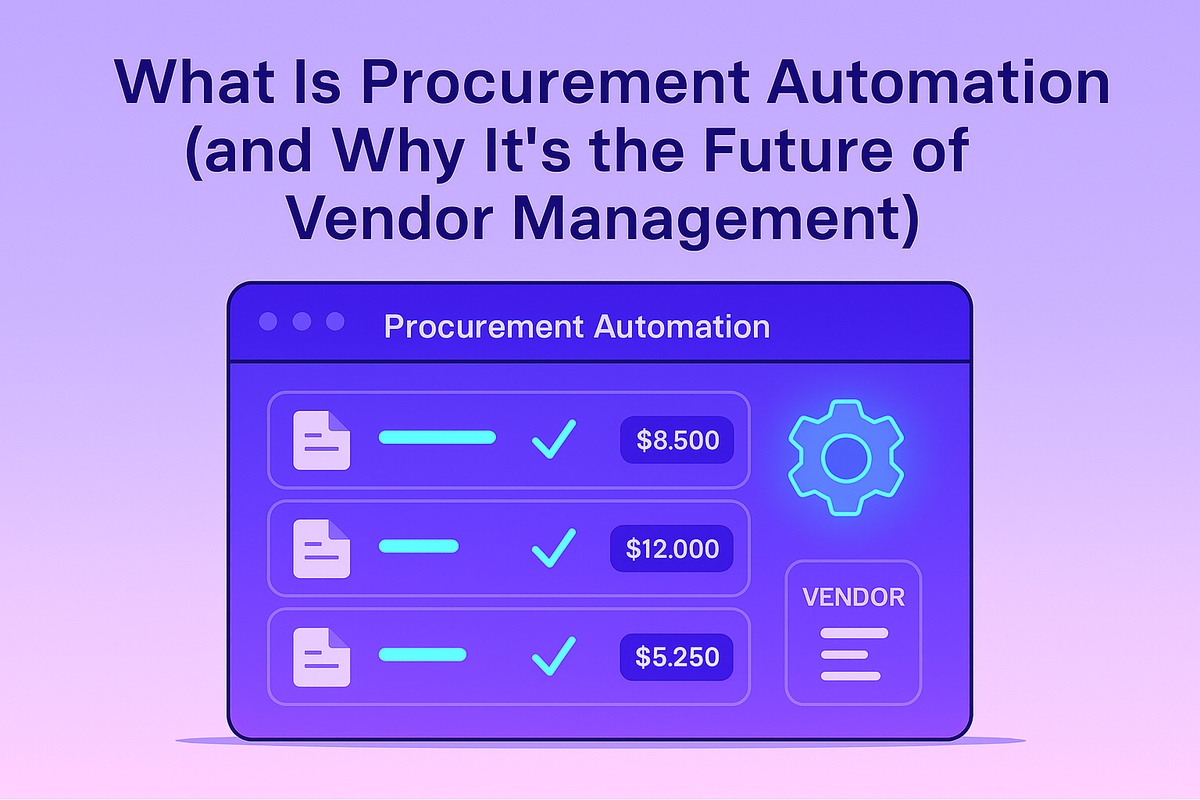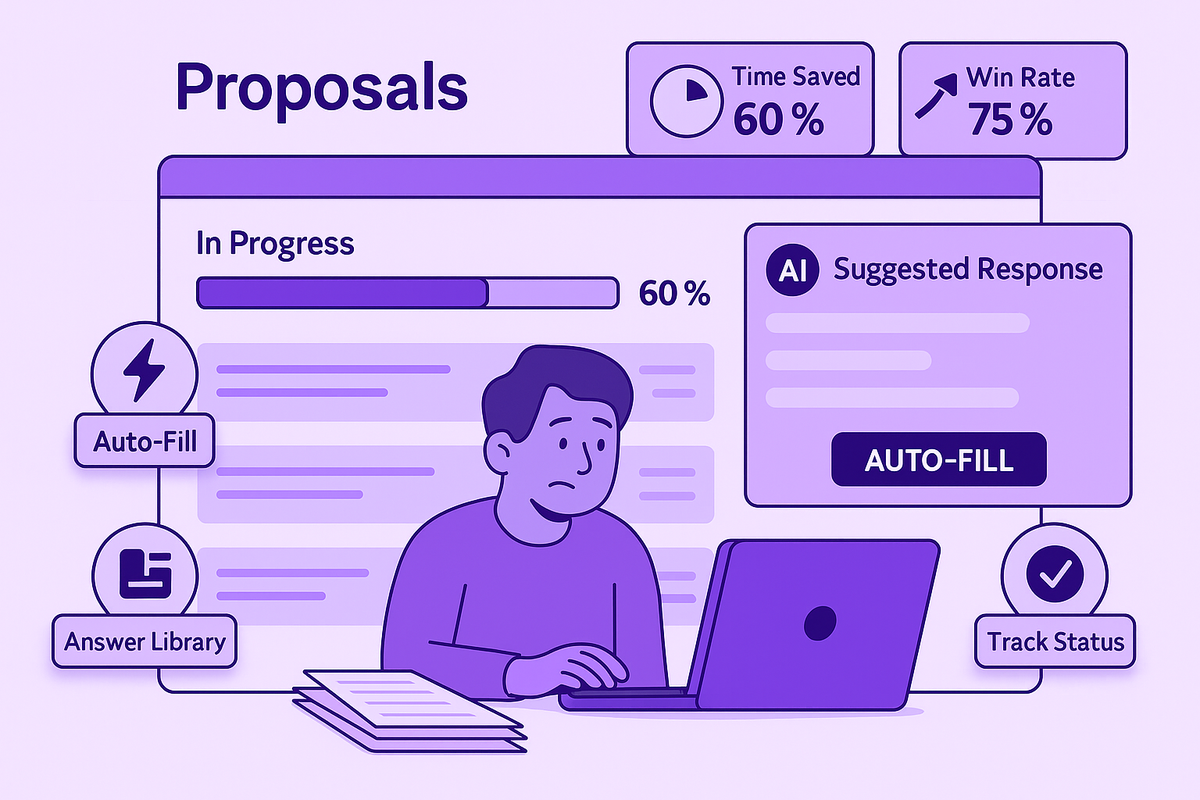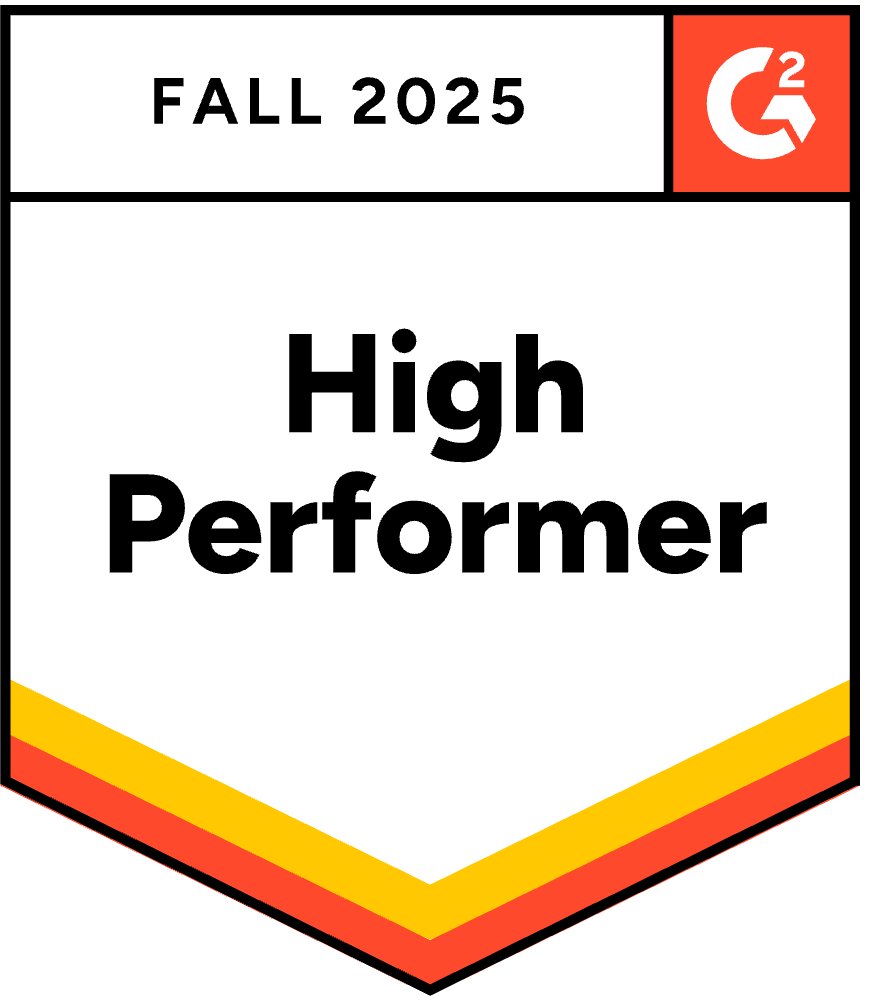Mandate Requirements and RFPs: Asset Management Essentials
March 21, 2025
By
Evie Secilmis

The asset management RFP process is a high-stakes opportunity to demonstrate your value and win trust. But let's be honest—it can feel like a mad dash. As institutions become more selective, the bar for quality and speed keeps rising. You need a solid system for handling complex mandate requirements and RFPs without the last-minute scramble. Having the right rfp support for asset management is key. This guide will help you build a repeatable process for every investment management rfp, ensuring you submit winning proposals every time.
Today, winning firms don't rely on dusty content libraries or rinse-and-repeat answers—they build smart, collaborative workflows powered by real-time intelligence and automation. That’s where modern tools like Iris make the difference.
What is a Request for Proposal (RFP)?
At its core, a Request for Proposal (RFP) is a formal document an organization uses to announce a new project and solicit bids from qualified vendors. As Investopedia explains, it "asks companies or contractors to submit their ideas and prices (bids) to complete the project." Think of it as a detailed job interview for your company. The issuing organization has a problem or a goal, but they don't have a predetermined solution. They are looking for a partner who can not only execute the work but also bring strategic insight and a creative approach to the table. This is your chance to go beyond a simple price list and demonstrate a deep understanding of their challenges.
A well-structured RFP typically outlines the project's scope, objectives, deliverables, timelines, and the specific criteria that will be used to evaluate submissions. Responding to one isn't just about checking boxes; it's a strategic exercise in storytelling and value demonstration. Your proposal needs to be a compelling narrative that positions your company as the ideal partner. It must be persuasive, accurate, and perfectly tailored to the client's stated needs. A winning response proves you’ve listened carefully and have a clear, actionable plan to deliver the results they’re looking for, making it a critical document in any complex sales cycle.
RFP vs. RFI vs. RFQ: Understanding the Differences
While people sometimes use these terms interchangeably, they represent distinct stages in the procurement process, and knowing the difference is key to managing your team's resources. An RFI, or Request for Information, is the earliest stage, used to "gather general information about what products and services suppliers can offer." It’s an educational tool for the buyer. An RFQ, or Request for Quote, is used when an organization "knows exactly what products or services it needs and just wants to get prices." It’s purely a price-based comparison. The RFP, or Request for Proposal, is for a specific, often complex project where the organization "needs a solution and wants creative ideas." It’s your opportunity to showcase expertise, not just a price tag.
The Pros and Cons of the RFP Process
The RFP process is a fundamental part of B2B and B2G sales, but it comes with its own set of advantages and challenges. For sellers, it can be a direct path to high-value, long-term contracts that might otherwise be inaccessible. It provides a structured framework to compete for business on a level playing field. However, the process can also be incredibly demanding, requiring a significant investment of time and internal resources. Understanding both sides of the coin is essential for building a sustainable and successful response strategy. It helps you make smarter decisions about which opportunities to pursue and how to allocate your team's valuable time for the best possible return.
Benefits of Using RFPs
From the buyer's perspective, the RFP process is designed to promote fairness and transparency. It formalizes the evaluation process, ensuring that "contracts are given out fairly, based on the best solution and price, rather than favoritism." This structured approach allows organizations to compare vendors using a consistent set of criteria, making it easier to justify their final decision. Furthermore, an RFP "acts like an advertisement, inviting many qualified companies to bid," which fosters healthy competition. This competitive environment often leads to more innovative solutions and better pricing for the buyer. For your team, this means that even if you don't have a pre-existing relationship, a superior proposal can win the day.
Drawbacks of the RFP Process
The most significant drawback of the RFP process is the sheer effort involved. As anyone on a sales team knows, "creating and responding to an RFP can take a lot of time and effort." This involves hours of work from your sales reps, subject matter experts, legal teams, and leadership, all collaborating to assemble a comprehensive and accurate document. This manual grind not only slows down your sales cycle but can also introduce errors and inconsistencies. The complexity can be so daunting that it makes it "hard for smaller companies to participate," limiting the buyer's options. For teams of any size, automating the tedious parts of this process with intelligent AI-powered features is the key to responding faster and focusing on the strategic elements that actually win deals.
So, What's an Asset Management RFP?
An asset management RFP is a formal request from institutions—like pensions, endowments, or foundations—seeking detailed proposals from investment managers. These RFPs assess everything from investment philosophy and team structure to risk controls, performance, and cost.
You’ll typically see RFPs issued by:
- Endowments and foundations
- Non-profits and associations
- Municipal pension plans
- Corporations with retirement plans (401(k), 403(b))
With increasing regulatory pressure and scrutiny, these issuers expect transparency, customization, and speed in how you respond.
The Growing Role of ESG in Investment Mandates and RFPs
It’s impossible to talk about modern asset management without mentioning Environmental, Social, and Governance (ESG) criteria. What was once a niche consideration has moved to the forefront of the investment world. Today, asset owners aren't just asking about your performance; they want to know about your principles. RFPs are now packed with detailed questions about how you integrate ESG factors into your investment process, your firm’s diversity and inclusion policies, and your strategy for engaging with companies on sustainability issues. This isn't just a box-ticking exercise; it's a fundamental test of your firm's values and long-term vision.
This shift adds a significant layer of complexity to the RFP response process. Answering ESG questions requires pulling data and narratives from multiple departments, ensuring every claim is accurate, and maintaining a consistent message across all proposals. When your team is under pressure to meet a deadline, it’s easy for outdated or inconsistent information to slip through. This is where having a smart, centralized knowledge base becomes essential. An AI-powered platform can help you manage these nuanced responses, ensuring that your ESG story is always clear, compelling, and correct.
Using Mandates to Communicate ESG Requirements
Asset owners are getting serious about making their expectations clear from the very beginning. They are increasingly using investment mandates to formally communicate their specific ESG needs. According to the Principles for Responsible Investment (PRI), these mandates are a "valuable way for asset owners to tell their asset managers about their ESG needs." This isn't a vague suggestion; it's a direct instruction. By embedding these requirements into the mandate, asset owners ensure that potential managers understand the non-negotiable aspects of their investment strategy before a proposal is even submitted.
Resources for ESG Integration
To make sure these principles are put into practice, asset owners are documenting their ESG goals directly within their RFPs. The PRI highlights that in order to effectively integrate ESG, "asset owners need to clearly write down their ESG goals" to inform potential managers of what is expected. This formal documentation creates a clear framework for evaluation and holds asset managers accountable for their commitments. This proactive approach not only improves transparency but also helps build a more responsible and sustainable investment landscape for everyone involved.
What Goes Into an Investment Management RFP?
Most asset management RFPs follow a familiar structure, though requirements are growing more detailed every year. Core sections include:
- Organizational Overview: The issuer’s mission, values, and investment objectives
- Requirements & Scope: Size of mandate, asset classes, oversight process, custodian relationships
- Evaluation Criteria: Diversity, ESG focus, GIPS compliance, regulatory standing, investment philosophy
- Submission Timeline: Deadlines and next steps
- Detailed Questionnaire: Covering team background, investment approach, reporting, operations, performance, and pricing
Every one of these sections is a chance to show why your firm is uniquely positioned to deliver.
Key Components of a Well-Written RFP
To write a winning response, you first need to understand the anatomy of the request itself. When an institution issues an RFP, they’re not just throwing questions at the wall; they’re following a structured format designed to make their evaluation process as fair and straightforward as possible. By recognizing these key components, you can tailor your proposal to directly address the issuer’s core needs, making it easier for them to see why your firm is the perfect fit. Think of it as learning the playbook before you step onto the field—it gives you a serious competitive advantage.
Project Goals and Background
This is the "why" behind the RFP. In this section, the issuing organization sets the stage by explaining the project's purpose and what they hope to achieve. It provides crucial context about their mission, current challenges, and the specific outcomes they’re targeting. For you, the responder, this section is gold. It’s where you can begin to align your firm’s unique value proposition with the issuer’s strategic objectives. A deep understanding of their goals allows you to frame your entire proposal not just as a list of services, but as a direct solution to their stated problem.
Detailed Scope of Work
If the goals are the "why," the scope of work is the "what." This section outlines the specific tasks, responsibilities, and deliverables the issuer expects from the selected partner. A well-crafted scope is a balancing act; it needs to be detailed enough to ensure all vendors are bidding on the same project, but not so rigid that it stifles innovative solutions. Pay close attention here. This is where you’ll determine if the mandate fits your firm’s capabilities and where you can start mapping your services directly to the required tasks, demonstrating a clear and immediate understanding of their needs.
Budget and Key Deadlines
This section covers the practical constraints: the "how much" and the "when." Issuers will typically provide a budget range or ask you to detail your pricing structure. Transparency is key, so be prepared to break down your costs clearly. Alongside the budget, you’ll find a timeline with critical dates, including the deadline for questions, the final submission date, and the anticipated decision-making schedule. These deadlines are non-negotiable, so mapping them out internally is one of the first things your team should do. Missing a deadline is the fastest way to get disqualified, no matter how great your proposal is.
Evaluation Criteria
This is arguably the most important section for any responding team. Here, the issuer tells you exactly how they will score your proposal. They’ll list the factors they care about most—such as investment performance, team experience, fee structure, or ESG integration—and sometimes even assign weights to each category. This is your roadmap to a winning response. By structuring your proposal to mirror these criteria, you make it incredibly easy for the evaluation committee to check their boxes and score you favorably. Ignore this section at your own peril.
The RFP Process from the Issuer's Perspective
It’s easy to get tunnel vision when you’re focused on crafting the perfect response, but taking a moment to walk in the issuer’s shoes can be a game-changer. The RFP process isn’t just a single event for them; it’s a multi-step journey that often begins months before the document ever lands in your inbox. Understanding their internal process helps you appreciate why they ask certain questions and why clarity and precision in your answers are so important. It’s a complex, stakeholder-driven effort, and the firms that make the evaluators’ jobs easier are the ones that stand out from the crowd.
Step 1: Discovery and Planning
Long before an RFP is written, the issuing organization goes through an internal discovery phase. This is where they define the problem they’re trying to solve and what a successful outcome looks like. Key stakeholders from different departments—finance, investment committees, leadership—come together to agree on the project’s goals and high-level needs. They’re essentially building the foundation for the entire project. Knowing this, you can appreciate that the RFP you receive is the result of careful internal deliberation, and each requirement likely has a specific stakeholder championing its importance within the organization.
Step 2: Gathering Requirements
Once the high-level goals are set, the issuer moves on to the nitty-gritty: gathering detailed requirements. This involves translating broad objectives into a specific checklist of business, technical, and operational needs. For an asset management RFP, this could include everything from minimum AUM and specific GIPS compliance standards to detailed reporting capabilities and cybersecurity protocols. This list of requirements becomes the backbone of the RFP questionnaire. It’s a meticulous process designed to ensure they can compare vendors on an apples-to-apples basis, which is why your responses need to be equally meticulous.
Step 3: Creating and Issuing the RFP
With a clear set of requirements in hand, the issuer’s team drafts the formal RFP document. They compile the project background, scope of work, detailed questionnaire, and evaluation criteria into a single, comprehensive package. This is often a collaborative effort that requires significant time and review to ensure clarity and completeness. Once finalized, the RFP is distributed to a list of potential vendors. For your team, this is where the race begins. Efficiently breaking down this dense document and assigning questions is critical, which is where an AI-powered platform can turn a multi-day task into a matter of minutes.
Step 4: Evaluating Proposals and Shortlisting Vendors
After the submission deadline passes, the real work begins for the evaluation committee. They gather all the proposals and begin the painstaking process of reviewing them against the predefined evaluation criteria. Many organizations use a scoring system to keep the process objective, grading each response on how well it meets their stated requirements. This is where your hard work pays off. A clear, well-organized proposal that directly answers each question and aligns with their scoring rubric makes their job infinitely easier. The goal of this stage is to narrow the field down to a small group of top contenders, or a shortlist.
Step 5: Demos, Selection, and Contracting
If you’ve made the shortlist, congratulations! This is where you get to bring your proposal to life. This final stage often involves presentations, demos, and in-depth interviews with the finalists. The issuer is looking to validate the claims made in your proposal and get a feel for your team’s culture and expertise. Their final decision is typically based on which vendor offers the best overall value—a combination of price, quality, experience, and partnership potential. It’s not always about being the cheapest. After selecting a winner, the process moves into contract negotiations to finalize the partnership.
Special Considerations for Government RFPs
Responding to RFPs from government entities, whether at the local, state, or federal level, introduces a whole new layer of complexity. These opportunities can be incredibly valuable, but they operate under a strict set of rules and regulations that don’t apply in the private sector. Public accountability and fairness are paramount, which means the process is often more rigid, transparent, and demanding. Success in this arena requires a deep understanding of public procurement processes and an unwavering commitment to following instructions to the letter. There’s simply no room for error.
Unique Requirements and Formats
Unlike corporate RFPs, which can sometimes offer a bit of flexibility, government RFPs are notoriously strict. The Federal Acquisition Regulation (FAR) and similar state-level rules dictate everything from the structure of the proposal to the font size you can use. You must follow the required format precisely, answer every single question as written, and provide all requested documentation without exception. Any deviation can lead to immediate disqualification. This is where having a robust content library and a streamlined response process, like those offered by the GovSpend and Iris partnership, becomes a critical asset for ensuring compliance and consistency.
Your Guide to the Asset Management RFP Response Process
Great responses don’t happen by accident—they’re the result of a tight, repeatable workflow that ensures your best thinking is front and center.
- Bid/No-Bid Decision (check out our bid qualification tool for free at pro.heyiris.ai)
Don’t chase every opportunity. Align your team early on whether the fit and ROI are there. - Kickoff Meeting
Assign owners, align stakeholders, and clarify timelines. A strong start is the best predictor of success. - Drafting the Narrative
Focus on the now. Not what you’ve said before. Each response should reflect today’s team, strategy, and capabilities. - Subject Matter Expert Input
Loop in the right people for sections that require nuance or depth. Create a culture of shared ownership, not bottlenecks. - Polish & Visuals
Edit for tone and clarity. Use clean formatting and visual aids to elevate your narrative and stand out. - Submission
Submit early and correctly—especially with portals. Confirm receipt and reinforce your interest in the next step. - Postmortem
Whether you win or lose, debrief quickly. What slowed you down? What landed well? Refine your process based on what you learn—not what you’ve reused.
Common RFP Roadblocks (And How to Get Past Them)
RFPs in this space are no joke. You’re often balancing:
- Tight timelines with minimal internal resources
- Siloed knowledge across investment, sales, and compliance teams
- Rigid formatting and portals that limit creativity
- Information overload—especially in complex questionnaires
Without a purpose-built workflow, the process can drag and dilute your strongest differentiators.
Actionable Tips for Your Next Investment Management RFP
Firms that consistently win RFPs approach the process like a sales motion—not a compliance exercise. Here’s what they do differently:
- Be selective
Focus only on RFPs where you bring a unique edge or relationship. Volume doesn’t equal velocity. - Treat every response like it matters
Each RFP is a conversation—not a copy-paste job. Invest the effort to speak directly to the issuer’s goals. - Design for clarity
Avoid dense paragraphs and buried points. Use structure, visuals, and whitespace to guide attention. - Make collaboration seamless
Internal chaos is visible in the final product. Invest in tools that reduce friction and encourage cross-functional input. - Use AI to work smarter
Tools like Iris use intelligent context and live input—not static templates—to accelerate drafting and elevate quality without repeating yourself.
Meet Iris: Your RFP Support for Asset Management
Iris isn’t a dusty answer database—it’s a real-time workspace designed to bring structure, speed, and clarity to the most complex RFPs. Instead of relying on past content, Iris:
- Guides you with relevant context based on the question, not old answers
- Streamlines collaboration across stakeholders—without endless threads or versioning nightmares
- Keeps everything centralized, secure, and transparent
- Helps you write like the best version of your firm—with zero drag
RFPs shouldn’t feel like a scramble. With Iris, they become an extension of your sales and relationship strategy—fast, modern, and client-focused.
Frequently Asked Questions
What really makes an asset management RFP so different from other types? The biggest difference is the level of trust you’re trying to build. You aren't just selling a product; you're asking an institution to entrust you with its financial future. This means the questions go much deeper, covering your core investment philosophy, risk management protocols, and the specific backgrounds of your team members. The level of detail and regulatory scrutiny is incredibly high, and the focus is on proving you can be a reliable long-term partner, not just a vendor for a one-time project.
ESG questions are showing up more and more. How can my team prepare for them? The key is to stop treating ESG as an afterthought. Instead of scrambling for answers each time, work with your compliance, investment, and leadership teams to create a central source for your firm's ESG policies, data, and success stories. This information should be treated as a core part of your firm’s narrative. When you have this foundation ready, you can pull from it to craft thoughtful, specific answers for each RFP, ensuring your message is always consistent and compelling.
What's the most common mistake you see firms make in their RFP responses? The most frequent misstep is treating the RFP like a generic questionnaire instead of a strategic sales document. Many teams fall into the trap of simply copying and pasting answers from previous proposals without tailoring them to the specific institution's goals. A winning response speaks directly to the issuer's mission and challenges, showing that you've done your homework and are genuinely invested in becoming their partner.
Our biggest challenge is just keeping all our information consistent and up-to-date. Any advice? This is a classic roadblock, and it usually stems from having information scattered across different documents, folders, and email chains. The most effective solution is to establish a single source of truth for all your response content. A centralized, collaborative platform where subject matter experts can update information in real-time eliminates the risk of using outdated data. This ensures everyone is working from the same playbook and that your final proposal is accurate and cohesive.
Is using an AI tool for RFPs just a faster way to copy and paste old answers? Not at all, and that’s an important distinction. Older tools might function like a simple search engine for past responses, which can lead to stale or irrelevant content. Modern AI platforms work differently. They use the context of each specific question to help you draft fresh, accurate, and relevant answers. The goal isn't just speed; it's about improving the quality and consistency of your proposals while freeing up your team to focus on strategy.
Key Takeaways
- Focus on quality over quantity: A winning strategy involves selectively pursuing the right opportunities and tailoring every response to directly address the issuer's specific goals and evaluation criteria.
- Establish a clear and repeatable process: Implement a consistent workflow—from kickoff to postmortem—to eliminate last-minute scrambles, ensure all stakeholders are aligned, and make continuous improvement a habit.
- Use modern tools to break down internal silos: A central, AI-powered workspace connects your subject matter experts, ensures everyone uses the most current information, and frees up your team to focus on crafting a compelling narrative.
Related Articles
Share this post
Link copied!



















